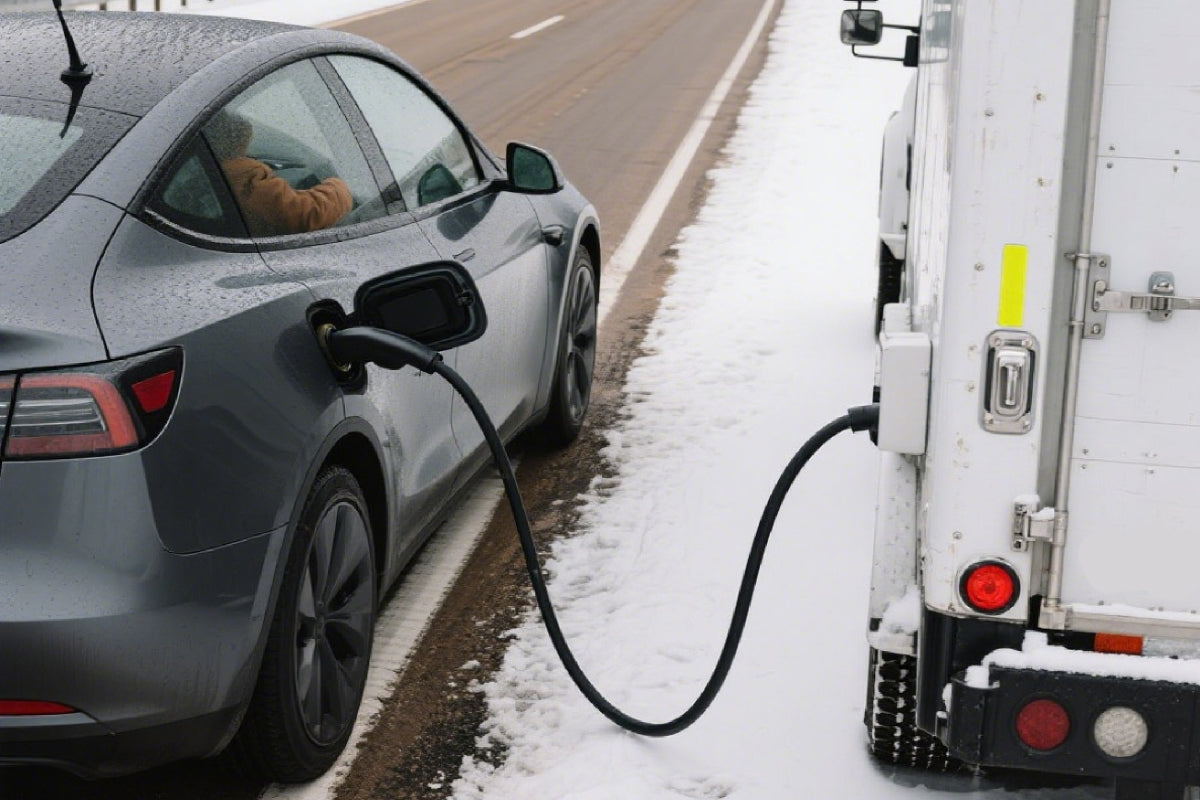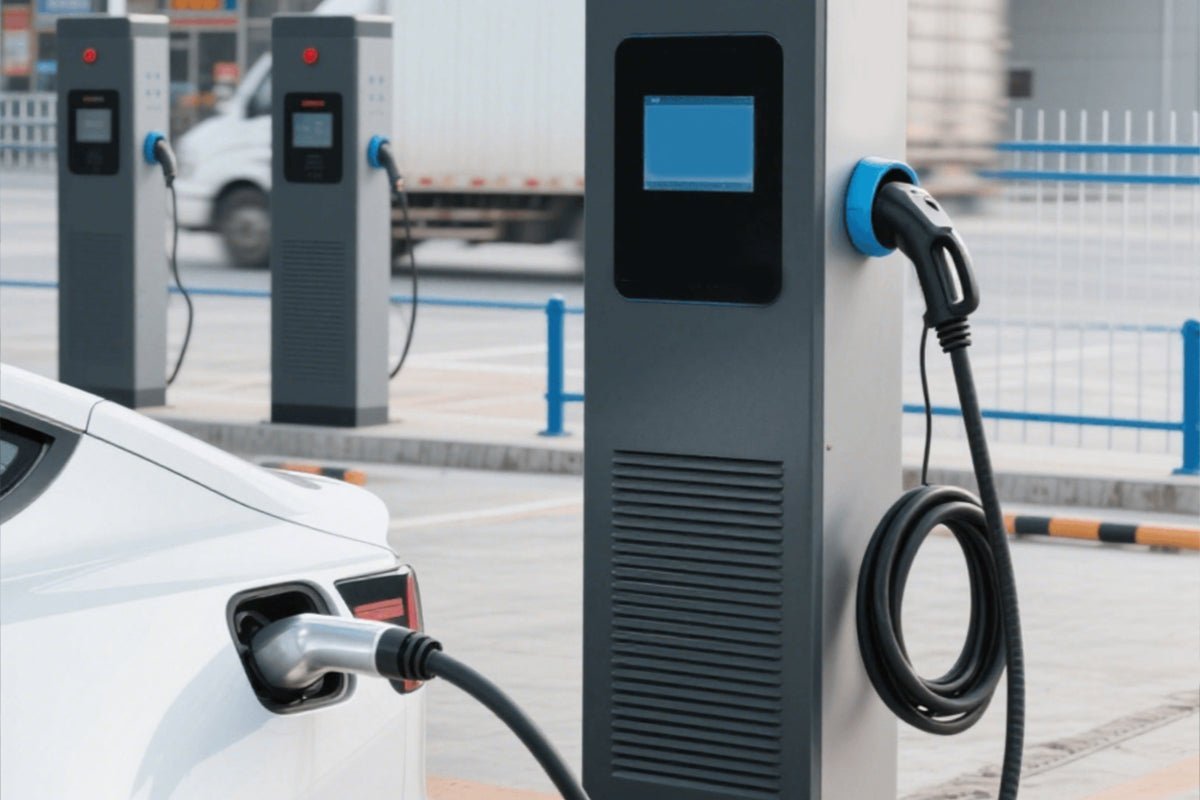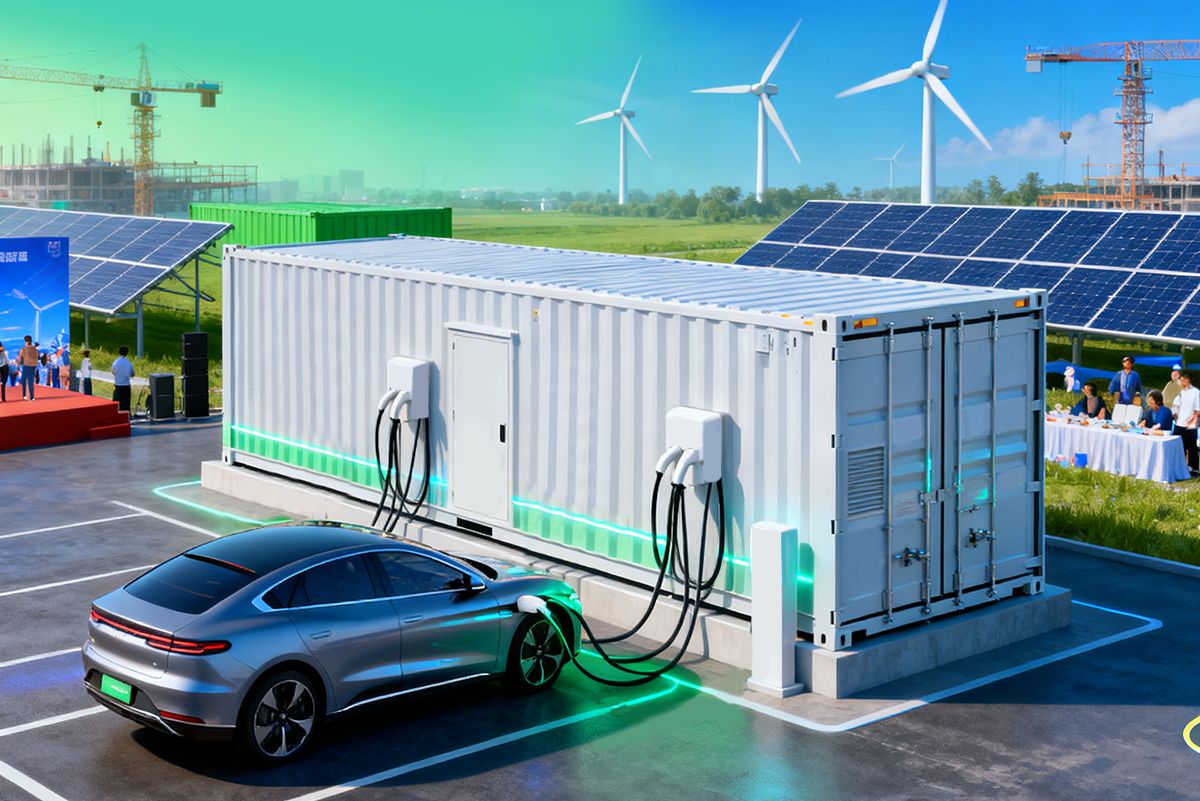1. Geographical Factors: Vast Territory and Infrastructure Shortcomings
In two typical North American countries—the United States and Canada—the land area is extremely vast, but the population distribution is highly uneven, with the vast majority of residents concentrated in coastal areas or metropolitan regions, while the vast inland and remote regions have sparse populations.
In these low-density areas, infrastructure development is costly and time-consuming, and the adoption rate of charging stations—a new type of public facility—lags far behind that in urban areas. Along highways or in rural areas with sparse populations, fixed fast-charging stations are often spaced dozens or even hundreds of kilometers apart.
Many people may ask, “If drivers know their vehicles have insufficient range, why do they continue driving? Why not charge in advance or avoid long-distance travel?” Such idealized driving behavior may hold true in regions like China or parts of Europe where charging station density is extremely high, but in the United States and Canada, “not finding a charging station” is often an objective reality, not driver negligence.
Additionally, climate and terrain are significant factors contributing to “running out of power”: (1) Cold weather: Many regions in North America experience harsh winters, where low temperatures can significantly reduce battery range; (2) High-altitude areas: Mountainous roads can cause a sharp increase in energy consumption due to steep inclines; (3) Equipment failures: During extreme weather conditions like cold snaps or blizzards, some charging stations may operate unreliably or even shut down. These factors mean that even if drivers plan their trips in advance, they may still face unexpected power outages. Before the charging network achieves full coverage, mobile energy storage charging stations play the role of “the last 30-mile guardian,” providing drivers with a mobile, reliable power supply solution.
2. Cultural Factors: A Mature Automotive Culture and Roadside Assistance Ecosystem
North America is one of the regions with the highest private vehicle ownership rates in the world. People are passionate about driving, camping, and cross-state travel, with long-distance driving being an integral part of daily life. Complementing this is a mature roadside assistance culture—when vehicle owners encounter issues such as flat tires, running out of fuel, or dead batteries, their first instinct is often to call for assistance rather than attempt to resolve the issue themselves. In this cultural context, the acceptance of mobile energy storage charging services is naturally high. In fact, major North American roadside assistance organizations have already begun to expand into this business: AAA (American Automobile Association): By 2023, 13 cities had joined the AAA Mobile Electric Vehicle Charging Pilot Program, providing emergency charging services to members; CAA (Canadian Automobile Association): Eight regional branches, including those in Ontario, Quebec, and Alberta, have launched mobile charging rescue services. This trend indicates that “calling for charging” is gradually becoming a standard rescue option alongside “calling for towing” and “calling for jump-starting.” As electric vehicle penetration rates rise, this service will be increasingly in demand.
3. Market Prospects and Commercial Viability
Although the probability of a single instance of running out of power is not high, the geographical expanse of North America, combined with infrastructure gaps and cultural acceptance, makes mobile energy storage charging an important link in the emergency supply chain. In terms of profit models, cost recovery can be achieved through multiple approaches: (1) Per-use charging: Fees based on mileage and energy replenishment volume; (2) Membership value-added services: Collaborate with relevant automotive clubs to include charging services in membership packages; (3) Cross-scenario applications: Expand into outdoor activity power supply, temporary construction site power supply, and emergency disaster power guarantee. As the number of electric vehicles continues to grow, mobile energy storage charging stations are not only rescue tools but may also evolve into a standardized, branded mobility charging service.
4. Conclusion:
In North America, the value of mobile energy storage charging stations lies not only in addressing extreme situations like “running out of power,” but also in filling gaps in fixed charging networks, aligning with established roadside assistance culture, and demonstrating commercial potential across diverse scenarios. Over the coming years, as charging infrastructure expands and electric vehicle adoption rates rise, this niche market will gradually evolve toward scalability and diversification.




Leave a comment
All comments are moderated before being published.
This site is protected by hCaptcha and the hCaptcha Privacy Policy and Terms of Service apply.